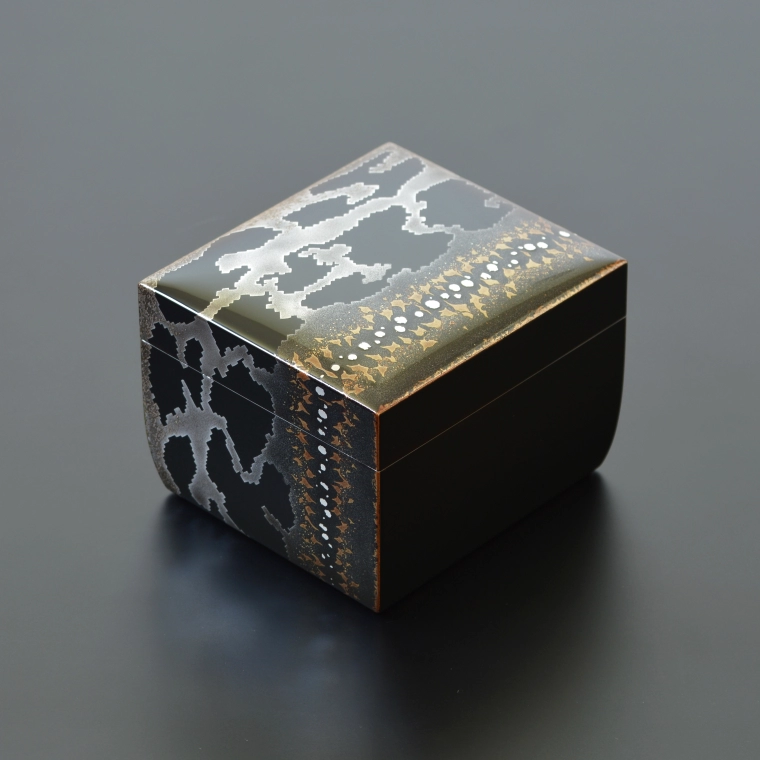Box with Design in Jigoemon Lacquering "Light of Dawn - Python VI"
H 9.0 x W 10.9 x D 12.1 cm,Year.2022Jigoemon Ohara XVI
1979 -- Lacquerware
- Awarded 5 times at the Japan Kōgei Assoc. Exhibition
-
Price Range
$1,500 - 35,000
Info
The prices of the artworks on Gallery Japan are determined by the artists themselves and are published directly on the website.
close
About the Artwork
Switching from the usual palladium to silver, the trail of the moulting painted on with gold maki-e is laid out with iwahirame (“flat-eyed rock”) silver powder. The silver vulcanises as time passes, dividing the silver and gold into yin and yang.
Description
-
CategoryLacquerware
-
MaterialsCypress, Hemp cloth, Gold powder, Silver powder
-
DimensionsH 9.0 x W 10.9 x D 12.1 cm
-
Year presented2022
-
RarityUnique
-
Paulownia BoxIncluded
-
Artist SignatureSigned (name of artwork, paulownia box)
Techniques Used
Maki-e
Maki-e (literally “sprinkled pictures”) is a representative lacquerware technique that originated in Japan around 1,200 years ago. Maki-e is done by painting lacquer motifs on the surface of a piece using a fine brush and then sprinkling gold powder onto the lacquer before it hardens, producing luxurious decorations.
Lacquering
Lacquering (kyūshitsu) is the art of applying lacquer to a substrate using spatulas or brushes. The technique includes a range of processes, from reinforcing the substrate with cloth to building up the foundation and applying the middle- and top-coats. The final coat can be left as is (nuritate), polished with charcoal to a high-gloss finish (roiro shiage), or given one of several hundred alternative (kawarinuri) finishes. Lacquer application is known for both its technical difficulty and richly expressive qualities.
Selected exhibitions
- The 61st Toyama Traditional Kōgei Exhibition
- Selected
Please feel free to contact us to commission work, check artworks available for purchase etc.


